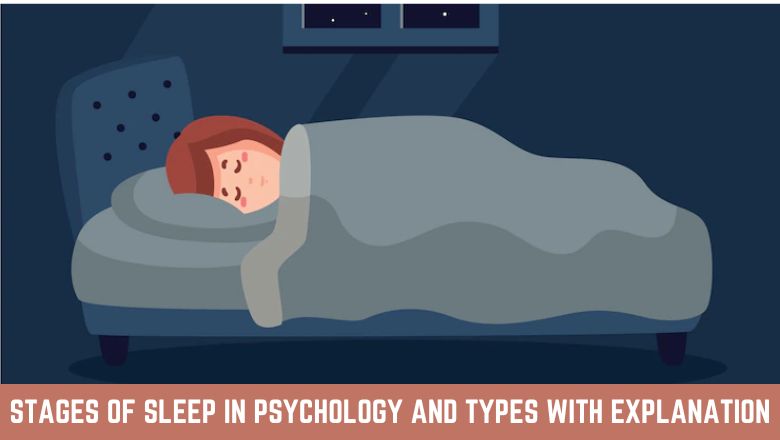This article explains “Stages of Sleep in Psychology and Types with Explanation“. The purpose of this section is to explain how sleep stages work.
To begin, I would like to describe what sleep is. In the nighttime, the sleeping process is a mode or condition of the body and mind. When eyes are closed, muscles are relaxed in sleeping positions, and awareness is drooping, the nervous system is not functioning normally.
Stages of Sleep in Psychology:
There are two stages to sleep:
- Non-Rapid Eye Movement (Non-REM).
- Rapid Eye Movement (REM).
NON-RAPID EYE MOVEMENT:
Also known as Non-REM, it is a type of sleep.
The Non-REM process includes 3 steps, namely N1, N2, and N3.
N1:
There are two stages of sleep: non-REM sleep and REM sleep. Since N1 marks the beginning and first stage of sleep, it’s a mixture of awareness and sleep.
When our eyes are closed in this state, our minds and brains are still functioning as it is between sleep and awareness.
In N1, you are aware of the events going on around you, but you can’t respond to them because you are half-awake and between sleep and consciousness.
A glance at your entire day is also possible with the N1.
N2:
The second sleep stage occurs at this point. Stage 2 is referred to as N2. It is during this phase that the individual is transitioning from a semi-sleepy state to a fully-sleeping state.
People with N2 are fully sleepy when neither their minds nor muscles are working, making it difficult for them to wake up.
N3:
Non-REM sleep is at its end at this stage. The N3 waveform looks like a delta wave. The feeling of being dead is almost impossible to wake up from in N3. In addition to those who move or speak while sleeping, N3 includes those who move during sleep as well.
RAPID EYE MOVEMENT:
You will notice that your eyes are moving faster at this point. Paradoxical sleep is also known as paradoxical sleep.
Paradoxical situations occur when the mind is active and the body is paralyzed.
To help you understand this term, here is an example.
If you are sleeping, imagine being pushed down a mountain, and being unable to protect yourself since you are asleep.
It is during this period that your body is paralyzed, so you cannot respond physically, but your eyes will continually move under your lids.
Wrapping Up:
It is my sincere hope that you enjoyed reading “Stages of Sleep in Psychology and Types with Explanation” as much as I did reading it. I would appreciate it if you could comment below if you would like to start a discussion about this.
I would appreciate it if you would share this article with your friends on social media so that more people can see it.
Keep reading and learning with Rehmat Ullah. Thank you!

